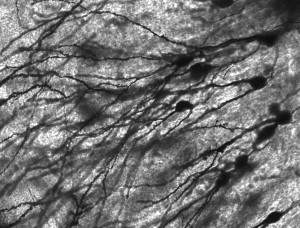- Calls to this hotline are currently being directed to Within Health or Eating Disorder Solutions
- Representatives are standing by 24/7 to help answer your questions
- All calls are confidential and HIPAA compliant
- There is no obligation or cost to call
- Eating Disorder Hope does not receive any commissions or fees dependent upon which provider you select
- Additional treatment providers are located on our directory or samhsa.gov
Mirror Neurons in Eating Disorder Treatment
Contributed by: Megan Ross, PhD candidate, LPC, R-DMT, GL-CMA of Timberline Knolls Residential Treatment Center

Interestingly, the mirror neuron cells were also activated in the premotor cortex of monkeys that were simply watching the other eat. Although the bystander was in no way engaged in the activity, the monkey’s brain cells were firing similarly, “mirroring” the observed behavior.
The Function of Mirror Neurons in Humans
Following this early research, significant investigation has surrounded the function of mirror neurons in humans. This has led to many theories on what mirror neurons actually do and what meaning their significance may or may not lay claim to.
There are those who suggest that mirror neurons were responsible for accelerating the evolution of the brain or were the driving force behind the origin of language. Outside of hypothesis, mirror neurons have tremendous value simply because they demonstrate the interpersonal nature of being human.
Human beings are strongly connected on many levels, and as such, can learn a great deal from one another.
How Mirror Neurons Are Involved in Eating Disorder Treatment
In the treatment of eating disorders, mirror neurons play an interesting role. Often those with a disorder such as anorexia tend to experience rigidity and inflexibility in their thoughts and actions.
The way they conduct their lives is often through a very black and white perspective. This is particularly evident in their perceptions of food and food consumption.
How Can They Assist With Treatment?

Through the insights and realizations of one, others are impacted with the possibilities of their own lives. This is specifically possible when somatic or body integrated treatment modalities are used.
The use of yoga therapy or dance/movement therapy provides the opportunity for an individual struggling with rigid thoughts or behaviors to experience new options through their own expanding repertoire of movement while also expanding through the observation and experience of others capacity for change.
As one-person talks and moves, her mirror neurons activate and so do brain cells in the other group members. Unwittingly, they are growing in the realization of choice.
Resources:
http://www.mitpressjournals.org/doi/full/10.1162/jocn.2009.21189#.U7webPldWbE
